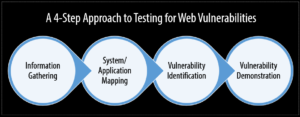Why Are Web Application Vulnerability Scans Not Working?
Web Application Vulnerability Scans Not Working
Web application vulnerability scans can be invasive or non-invasive. Non-invasive scans are safe, because they only run basic tests and don’t mess with your web application. Invasive scans, on the other hand, simulate real attacks that can compromise your web app. When these attacks take place, your website will be slowed down and your data may be deleted.
web application vulnerability scans attacks are a serious problem for companies. In addition to damaging the business, they also pose legal risks. For example, a major lingerie manufacturer, Victoria’s Secret, was sued in 2005 after details of individual customers were exposed. The company was ordered to pay a $50,000 fine in New York state. Another organization, Tennessee’s payroll department, was sued for exposing social security numbers.

Fortunately, there are solutions for detecting web application vulnerabilities that are effective and affordable. Fix-First Analyzer is one such product. This tool works across your cloud infrastructure and servers, which can save you time and money. Not only does it scan web applications, but it also performs emerging threat scans when new vulnerabilities come up. Furthermore, with Intruder, you can get comprehensive reports about security risks that you might not otherwise have known about.
Why Are Web Application Vulnerability Scans Not Working?
A comprehensive security strategy takes years to build and should constantly evolve to keep up with the threat landscape. An effective vulnerability scanner can help identify the most exposed and serious technical weaknesses, alerting your organisation to threats it may face. However, you can’t do this alone. You need to consult your IT department to ensure that it uses the right software and procedures.
External web application vulnerability scans can result in high amounts of traffic, which could overload your servers and cause a denial-of-service attack. To keep your website from going down, vulnerability testing is an important part of your overall security strategy. Many security professionals integrate vulnerability testing into their QA and DevOps processes.
Passive vulnerability scanning is another option, which involves looking at the things in your network without physically touching them. You might visualize passive vulnerability scanning as looking at a door that you don’t want to open. When the door is closed, the scan ends. This approach is not effective in many cases.
If you’re looking for an open source web application vulnerability scanner, you may want to try Ratproxy. This tool is designed to identify hundreds of vulnerabilities in web applications, and it supports Linux, FreeBSD, Mac OS X, and Windows. The best part is that Ratproxy overcomes many of the problems associated with other proxy tools. For example, it can detect JavaScript and CSS styles, and it also supports SSL man-in-the-middle attacks.
Hackers have found a loophole in corporate security systems and are taking advantage of it. Web applications are publicly available, providing easy access to hackers. One flaw in an application can result in a data breach. Because of this, it’s important to conduct regular web application vulnerability scans.